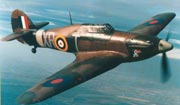
Personnel to be dropped into enemy territory usually arrived in large American cars with curtained windows. The strictest security was observed during this period. They were taken to ‘dressing huts’ where they were searched for any tell-tale objects. They were then helped into large padded jump-suits and rubber helmets. During this time no one except the S.O.E. dressers were allowed to talk to them.
Just before take off the agents, or 'Joes' as they were known, were driven to the Liberator which was waiting with it’s engines ticking over. The aircraft made it’s slow progress to the runway and on receiving the green light from the tower, took off into the night sky.
The radio operator was soon busy with his signals and once the enemy coast was reached, the bombardier and the navigator started their double act. The pilot usually flew at a height of 4000 to 5000 feet over the enemy coast and then dropped down on to a lower level, giving known airfields and flak areas a wide berth. Night fighters were always a hazard but flying at low altitudes, this threat was minimised.
Missions mostly took place during moonlit periods. The two turret gunners kept a constant look out for predators and their guns were fitted with large anti-flash discs, to lessen the loss of night vision.
As they neared the Drop Zone (D.Z.) the reception party heard the throb of the aircraft engines and established contact by the ‘S’ phone (see Airborne Section on website) The torches were placed in the pre-arranged pattern and the light codes were exchanged. The aircraft was at it’s most vulnerable over the D.Z. and the pilot wasted no time lining up the twinkling markers. The agents had prepared for their drop and awaited the green light. The first to go sat on the open ‘Joe Hole’ and slipped away, his place being quickly taken by the next, who followed him.
Satellite of 84 O.T.U., R.A.F. Desborough (Wellington, Master) 1943.
801st Bomb Group (P) (B-24,C-47) 1944.
492nd Bomb Group (B-24, C47, B-17, Mosquito, A-26)
Commanding Officers
801st/492nd BG (Plus 406 BG 1945)
Colonel Clifford Heflin - 28.03.44.
Lt. Colonel Robert Fish - 26.08.44.
Colonel Hudson W. Upman. - 17.12.44 to 07.06.45
Group Operational record
B-24 Aircraft Complement. 69
Aircraft Missing in Action. 26
Aircrew Killed in Action. 197
Aircrew Killed in Training. 11

U.S.A.A.F. 179 Airfield Code:HR
Built by 826th and 852nd Engineer Battalions, U.S.Army
Some of the aircraft that were employed at Harrington Airbase. Click here see various aircraft in action


Jack Ringelbach was an American pilot based at Harrington Air Field. He served in the 35th and 856th bombardment squadrons. His missions commenced 7th. February, 1944 and were completed on 11th. July, 1944.
He was awarded the Air Medal with three oak leaf clusters and the Distinguished Flying Cross.
The rear of his flying jacket had artwork painted by the base artshop, with the name ‘Jingle’ included and also musical notes. On the front of the jacket were represented bombs, or containers. These indicate the missions in which he participated. All his missions were in Europe, concentrating on France, Norway and Belgium.
On one mission he was joined on board by Violette Szabo. This was to be her last mission. She was never to return.